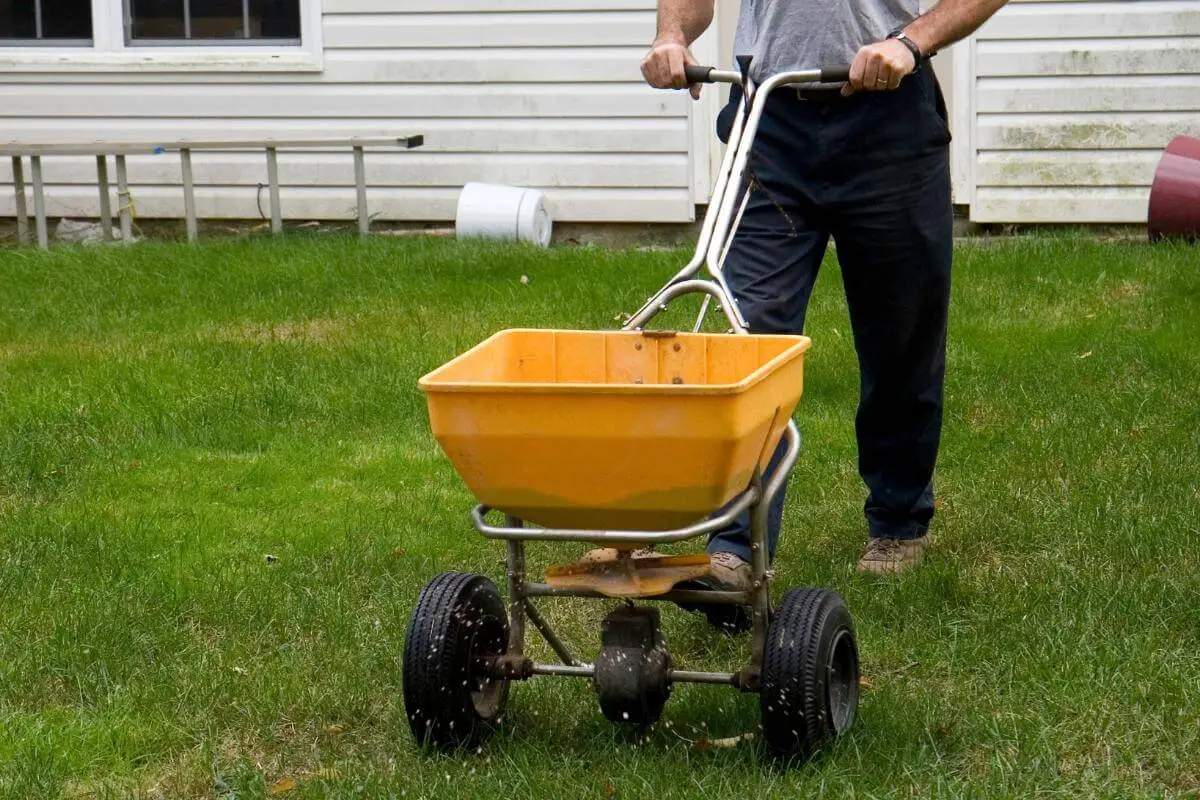Everyone envies that yard on the street with a thick, luscious green lawn.
So, how do they do it? Overseeding is the best way to add grass and improve your lawn without turning the existing soil.
Whenever you overseed your lawn, you’ll also need to add a top dressing to bed the new seed into the soil. Many non-green thumbs will be wondering, “can I use compost for overseeding”?
You should always use compost for overseeding. Compost is nutrient-rich and has organic materials that feed soil microbes, allowing the food to reach the grass seed and existing soil below as the compost breaks down over time. Compost is also great at retaining water, allowing your seed to remain moist, and is ideal for overseeding an existing yard.
Topsoil vs Compost – Which Is Better?
When overseeding, your grass needs a good balance of nutrient-rich food and plenty of moisture to encourage the new seed to grow.
While many in the past may have reached for the largest bag of topsoil they could find, compost is far better suited when overseeding for a number of reasons.
Let’s look at the pros and cons of using compost vs topsoil.
Pros of Using Compost
- Compost provides a slow release of nutrients that encourages new grass seeds to sprout growth quickly.
- Compost promotes soil microbes, allowing the food to stimulate grass and seed growth.
- Compost retains water, keeping your seeds moist longer.
- Compost slowly releases nutrients to seeds and the existing layer of soil below.

Cons of Using Topsoil
- Topsoil is often applied in a thin layer and will dry out very quickly.
- Topsoil has very little organic matter, so does not release nutrients into the seed or soil.
- Dry topsoil can actually kill seed, drawing moisture from the seed.
- When topsoil dries, it tends to be blown away by the wind.
It’s clear that using compost will yield far better results when overseeding. It will promote healthy new seed growth and achieve thicker and richer colored grass for your yard.
Let’s Find Out: With so many different composts available, you may be wondering what’s the best compost to use when overseeding.
What Type of Compost Is Best for Overseeding?
Compost is essentially decomposing organic matter that can be made at home, bought in small bags, or purchased in bulk from your local landscaping supply store or garden center.
It’s the stuff of life, full of microorganisms and nutrients that your grass and soil need to thrive.
It is best to use nitrogen-rich compost with a small particle size when overseeding.
Use a screened compost or compost that has a particle size of 3/8-inch or smaller.
This will ensure the compost stays on the top level and does not smother the grass below.
Compost Thickness When Top Dressing
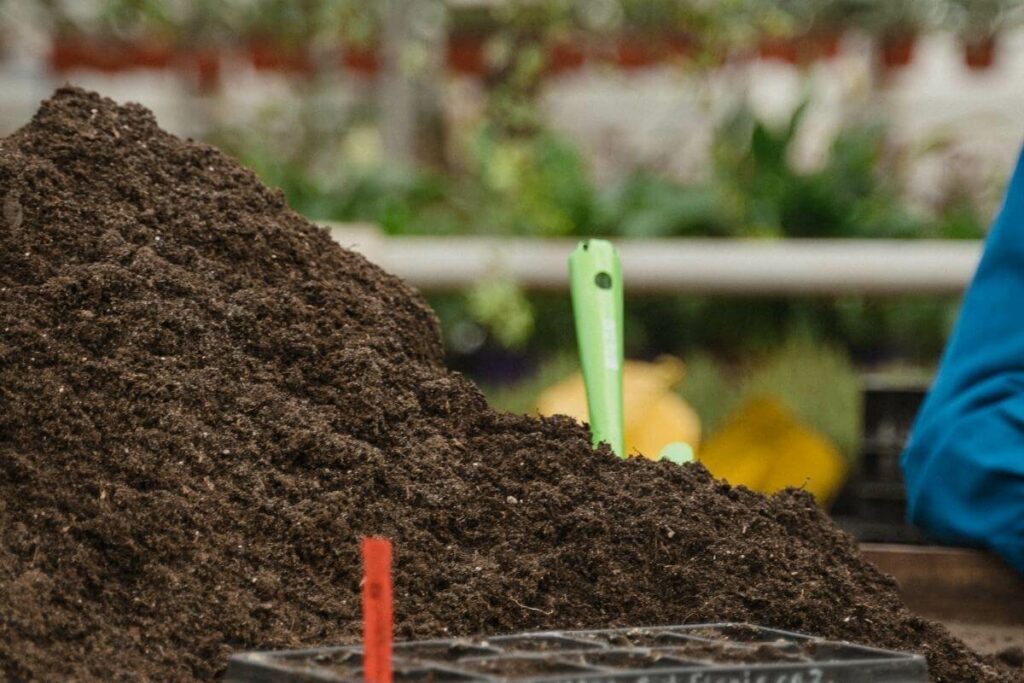
When applying the compost as a top dressing, spread the material evenly and around ¼ to ½ of an inch in thickness over the existing lawn.
This even layer of compost as top dressing will provide sufficient nutrients, retain moisture, and feed lawn microbes that help develop a thicker and more luscious lawn.
Order Compost in Bulk When Overseeding
As a rule of thumb, use 1 cubic yard of compost per 1,000 square feet of yard.
This is spreading it around ¼ to ⅓ of an inch thick. It’s best to purchase your compost in bulk when you plan to overseed your yard.
Most large local landscape supply yards and garden centers will be able to provide bulk compost material that’s better for your lawn than the smaller bagged compost available from smaller stores.
This is due to the fact that larger bulk compost suppliers will have tested the compost to ensure there are no residual pesticides or herbicides present in the compost you order.
Think Twice: With smaller bagged compost, it’s guesswork, and very likely that it’s not been tested for pesticides or herbicides at all.
Can You Make Your Own Compost?
Yes, compost is really easy to make on a small scale, although it does take anywhere from a few months to a few years, so plan ahead!
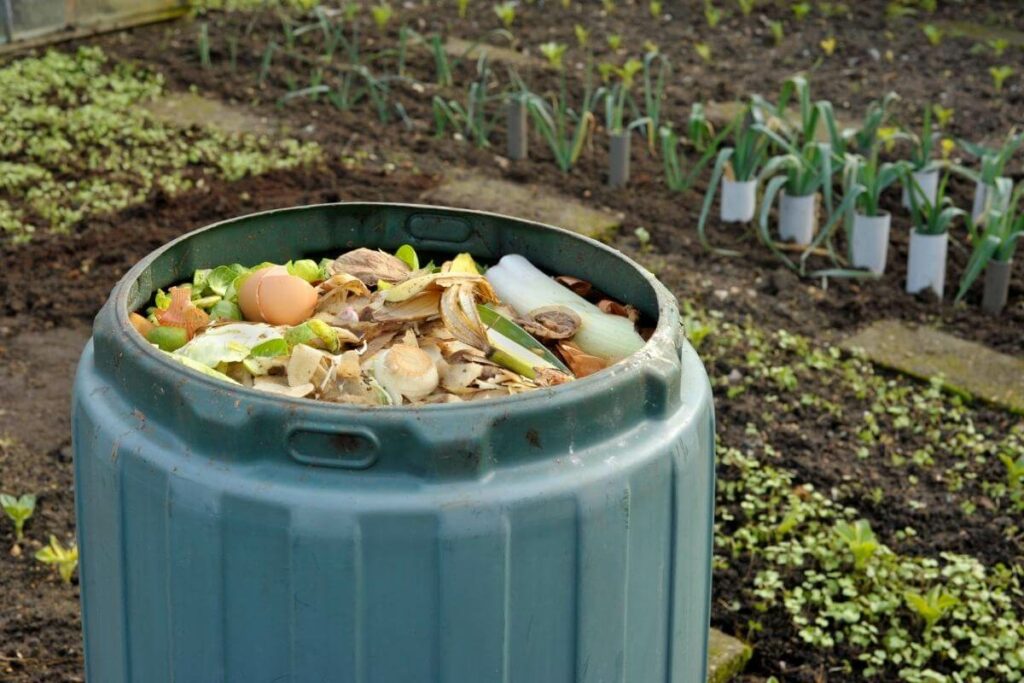
You can make it in your backyard and it can be made using virtually any organic matter, such as:
- food scraps
- leaves
- grass clippings
- hay
- straw
- or even tree bark
Then it’s simply a matter of leaving the organic material to slowly decompose with enough aeration until all that’s left is a rich, musty material and when done right should have a consistency of a dense fibrous potting soil.
Making the right compost for your lawn (and making enough of it) will take a considerable amount of time and effort, not to mention quite a lot of space.
You’ll need to be quite selective in what type of organic matter you decompose. Grass and overseeding require compost with high nitrogen content.
If you’re dead set on making your own compost, then avoid fruit or vegetables that seed easily, or else you may end up seeding more than just grass.
For The Persistent: You’ll also want to screen your homemade compost, which while not impossible, can be tricky.
Timing Compost and Overseeding
The best time for overseeding your yard and applying a top dressing of compost is dependent on where you live.
Typically, compost and overseeding are done in spring or fall:
- In cool regions, apply a lighter coat of compost in the spring, followed by a heavier coat in the fall.
- In warmer climates such as in the south, topdress grasses in early spring.
How to Compost When Overseeding (Step-by-step)
There are 6 simple steps to applying compost when overseeding your yard.
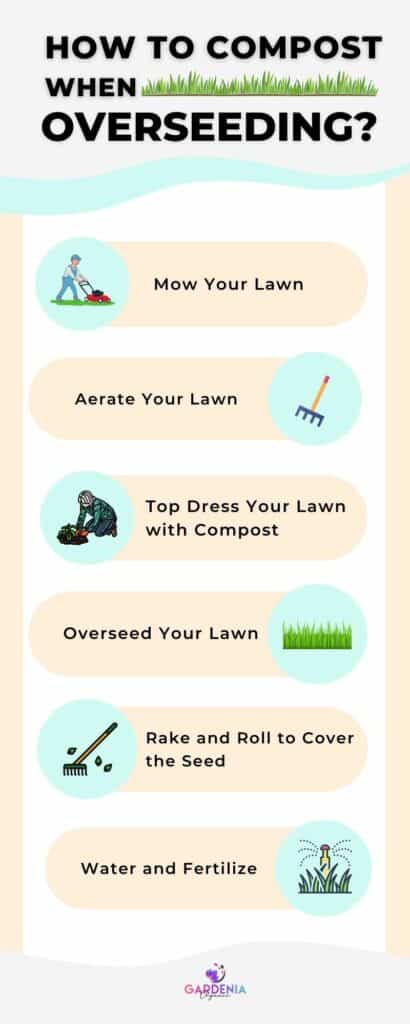
1. Mow Your Lawn
First and foremost, you’ll want to make sure you evenly mow your lawn.
Cut it a little shorter than normal (around 1.5–2 inches). You should be able to see a little soil between blades of grass.
Make sure you don’t skip this step as a fine mow will make the remaining steps much easier.
2. Aerate, Aerate, Aerate
Anyone who’s visited a golf course will know the importance of aeration and getting that dense, rich-colored grass.
Aerate your entire lawn using a core aeration tool.
This will allow for compost to reach into the existing soil faster, allowing it to feed the roots of the grass and promote healthy growth.
3. Top Dress Your Lawn with Compost
Calculate your usage of compost based on 1 cubic yard of compost per 1,000 square feet of yard.
This will allow you to evenly spread the compost to a thickness between ¼ and ⅓ of an inch.
Be careful not to apply your compost too thick as this will cause the grass below to be smothered.
4. Overseed Your Lawn
Many will argue that you should spread your seed before you top dress, although the best green thumbs all agree; you’ll get better results if you top dress then overseed.
Spread your seed according to your seed supplier instructions or bag rates.
Using a broadcast spreader tool is the best way to get a nice even distribution of seed over your entire yard.
5. Rake and Roll to Cover the Seed
Use a garden rake to gently cover the seed with your compost.
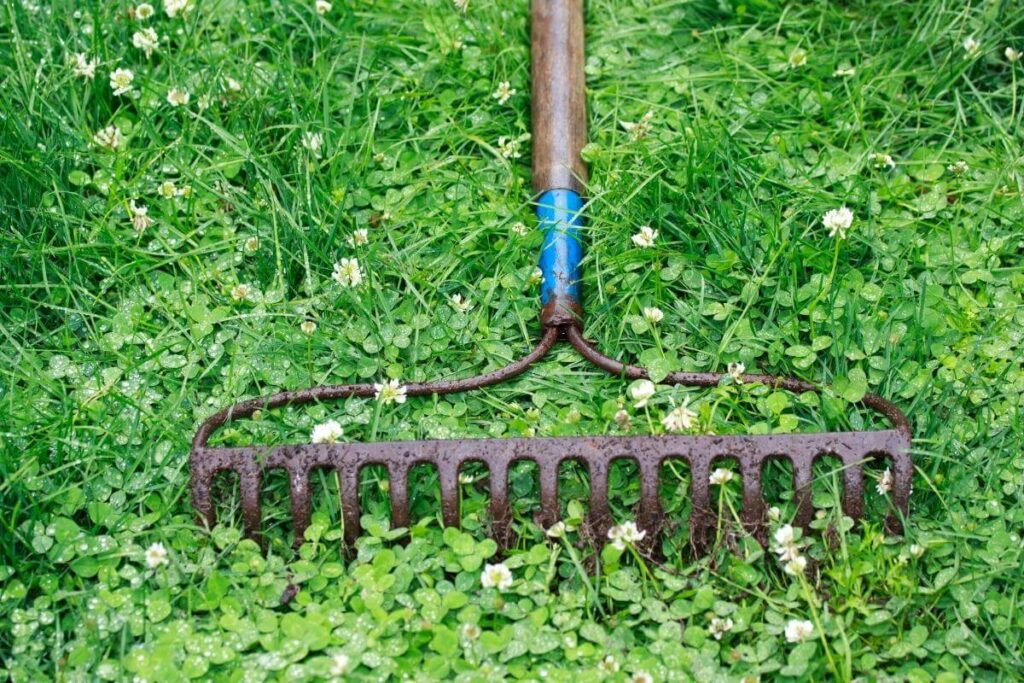
Aim for the seed to be around ¼ of an inch below the surface. Although, it’s totally normal if some seed is still visible on the top of the soil after it has been raked.
Use a garden roller to flatten out the raked seed and compost mixture.
This will compress the seed and compost together and push compost and seed into the aeration holes.
6. Water and Fertilize
With all those steps completed, you’re ready to begin to water and fertilize your yard.
It should take a few weeks for your new seed to sprout and take off, so just be patient and don’t overwater it too much.
The compost should be watered for around 15-20 minutes, twice a day.
Don’t Forget: Avoid watering during the hottest parts of the day.
Conclusion
You’ve now got all the information at hand to encourage a thriving yard, filled with luscious and rich colored grass that’s sure to be the envy of your neighbors.
Remember, always use compost instead of topsoil for your overseeding project as it will yield better results.
Use nitrogen-enriched compost and always buy in bulk from a reputable landscape supply store or garden center.
Also Useful
- The Ideal Compost Greens to Browns Ratio
- How to Test Compost Quality (6 Easy Ways)
- Composting Pasta: Do’s and Dont’s
